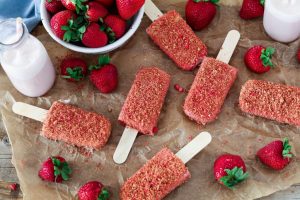Once someone has made the decision to go vegan, they may feel the task is a little daunting. One of the first steps is replacing foods you typically eat with vegan alternatives. Keep in mind that basically any dish can be made without animal products!
A great first step is to stock up your pantry. Some may need to replace their entire cupboard; some are already just about there. It can be extra difficult to cut out certain foods if you do not already have a replacement for it, so be sure to stock up on your favorites! A few vegan staples you should consider include beans, nuts, tofu, and loads of fruits and vegetables. Condiments are essential – stock up on olive oil, mustard, tahini, hot sauce, and anything else to add some flavor to your meals.
To make the transition even easier, plan your meals ahead of time. Meal preparation might be the key to your success; check out the following meals to create a plan!
Breakfast:
- Oatmeal with maple syrup, bananas, almond milk, and flax / hemp seeds
Fruit juice or smoothie - Toast with jam or nut butter
- Vegan tofu scramble with vegetables – try mushroom & spinach!
- Avocado & bean toast
- Potato pancakes
- Vegan sausage and bacon
Lunch:
- Chickpea salad with pita or naan
- Grilled tofu over greens or rice
- Vegan tacos – try Beyond Meat beefy crumbles!
- Pumpkin and mushroom pasta
- Lentil soup
- Tempeh pita
Dinner:
- Bean chili – try adding quinoa!
- Roasted zucchini and tomato pasta
- Vegetable soup
- Grilled tofu “steaks”
- Falafel and veggie wrap
The key to a vegan diet is planning. It is easy to get all the required nutrients on a vegan diet, though just as easy to miss some as well. By planning ahead, one can make well-rounded meals which cover the essential food groups.
Fresh fruits and vegetables can be tricky to plan for. You can never be absolutely sure when your avocado will be ripe, or when your bananas will be perfectly freckled. Be sure to buy frozen and dried produce, so that your dinner plate is never lacking. Frozen produce is flash frozen at peak ripeness and dried produce is great for snacking between meals.
If you currently partake in meal prep, you are already underway to an easy transition. A simple search on the internet will return tons of recipes you already love – just add the word “vegan” in there and you are all set. Have you found any surprising alternatives? I know I never thought a vegan would have bacon and eggs for breakfast! All it takes is a little creativity and passion.



